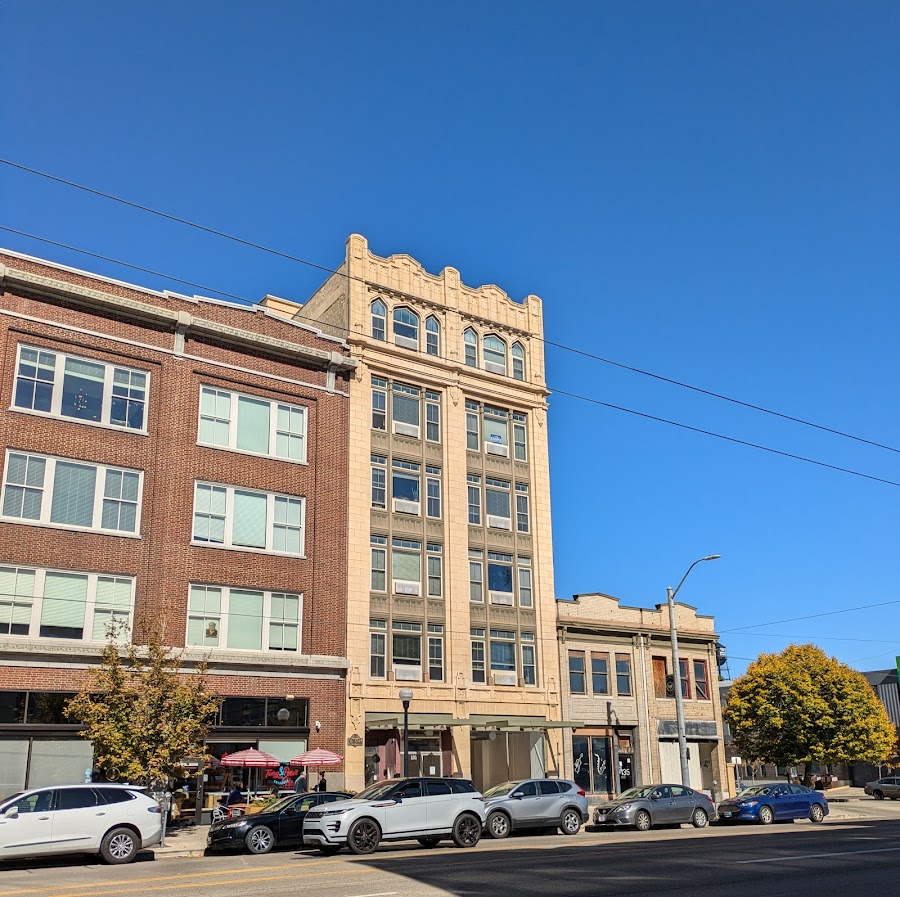
The Fire Blocks has been a hot topic in recent years due to the major redevelopment project spearheaded by The Windsor Companies that has brought apartments and a variety of restaurants and retail shops to a formerly sleepy stretch of East Third Street downtown.
But one building in the area that’s been a little more under the radar is a 6-story tall, narrow 2-bay structure on the north side of the street at 131-133 East Third.
It is the site of the Oriel Studios apartments and was historically known as the Johnson and Watson Commercial Building.
The building is Dayton’s only example of the Gothic Commercial architectural style, and was also the first structure built after the flood in the Fire Blocks area after the disaster.

To be clear, the building’s ornamentation is rather subtle, but it has more interesting details than most of the other buildings in the district which are more functional in design. The National Register historic nomination form for the district describes the building in detail (which you can compare to the images above and below):
“It features a uniquely detailed, glazed, yellow terra cotta façade. (The first-floor storefront) is divided from the upper stories by a paneled belt course. Windows are commercial style windows with 1/1 light windows flanking a large single light with multi-light transoms above. Window sashes are divided vertically by Gothic column-like mullions and horizontally by paneled spandrels. These panels have Gothic arches. Bays are divided vertically by full-height Gothic columns. The fifth story is divided from the top story by an entablature with Gothic ornamentation. This top story also has Chicago style windows, but the transom panels have Gothic arches. These windows are divided from the shaped paneled parapet by a dentilled cornice.
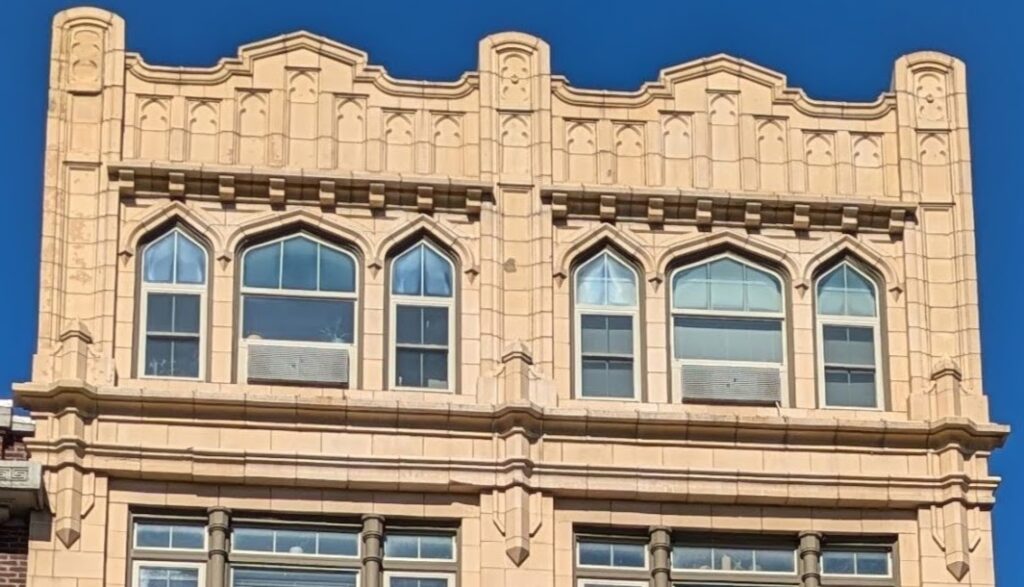
The Johnson and Watson company was a printing firm dating back to 1849 which became “pioneers in the blank book business in Dayton.”
Before the flood the Johnson and Watson Co occupied the Gebhart building at the same site on East Third for 30 years until it was destroyed in 1913. Plans for the current building were announced the following year.
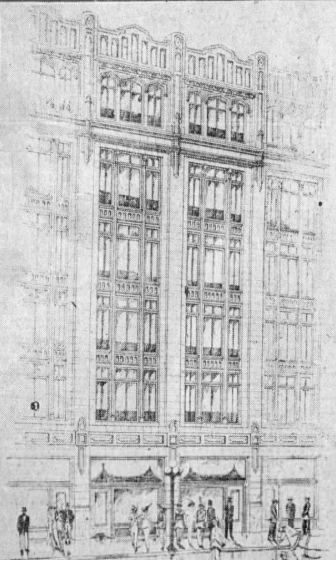
When it opened, the building had retail store rooms on the ground floor, with manufacturing spaces on the upper floors, including the bindery department on the fifth floor which included equipment for “perforating, punching, cutting, round cornering, paging, numbering, crimping, eyeletting, scoring, backing and sewing machines.”
Back at early tenant in the building was the Economical Vulcanizing Co. And an intriguing 1915 newspaper article states that “a branch of the famous factories of the World motion picture producers, and all equipment necessary in the production of motion picture films” opened on the sixth floor of the building. Company representatives came from Chicago to open the studio, but it’s unclear how long that operation lasted.
The Johnson and Watson company remained in the building until 1923 when it sold the property to Mrs. Merretta Kirby, wife of John Kirby who was president of the Dayton Manufacturing Company. Later that year Johnson and Watson constructed a new 4-story building just around the corner at 116 N. Jefferson Street.
More recently, the ground floor of the Johnson and Watson Building was the home of Skeleton Dust Records before that business moved to the Huffman neighborhood.
A Quick Primer on Gothic and Gothic Commercial Architecture
A commercial building like this is likely not what comes to mind when you think of Gothic architecture, so let’s quickly run through some background on the style.
In Europe, the Gothic architectural style lasted from the 12th to the 16th century, and was “particularly a style of masonry building characterized by cavernous spaces with the expanse of walls broken up by overlaid tracery.” It is most notably associated with great European cathedrals and other church buildings.
Gothic style started to be considered outdated when the Renaissance hit, but enjoyed its own rebirth in the 19th century when a group of architects and writers including (John) Ruskin, (Augustus) Pugin, and (Eugène) Viollet-le-Duc “rediscovered it and brought about the First Gothic Revival” (Archsculpt).
Then it fell out of fashion again, but soon after was reimagined into three different forms: churches, schools, and commercial buildings, including Cathedral-like high-rises like the Woolworth Building in New York City.
The Johnson and Watson in Dayton is of course in a different stratosphere from the Woolworth, which at its construction was the tallest building in the world, but we can learn from the general principles of the Gothic commercial style:
“Decoration was largely made possible by the use of terra cotta instead of carved stone for much of its detailing. Oversized finials, spires, pinnacles, crockets and other Gothic characteristics could be created by the dozen once a mold was made and this allowed for their repetition across the facade and up and down the length of the building. The advantages of this approach was quickly picked up by both architects and businessmen and commercial Gothic structures sprung up across the country” (ibid).
That same source also states that a defining feature is the “grotesque,” meaning a “distorted human figure, usually crammed into a square frame.” These usually had some connection to the building’s use if you look carefully, such as a figure clutching a cash box appearing on the facade of a bank building. The Johnson & Watson doesn’t feature this particular detail (at least as far as I could identify!)
And years before the Woolworth rose in New York, Chicago architects began “adapting medieval building styles for commercial purposes during the period of rebuilding that followed the disastrous fire of 1871” (Merwood-Salisbury). This too was of course on a completely different scale but does bring to mind the way the Fire Blocks in Dayton were lost to fire and then rebuilt.
In Chicago, “Gothic Revival became the default style for any commercial building with pretense to significance in downtown Chicago” with buildings exemplifying the key Gothic elements such as “narrow windows with pointed arches, naturalistic ornament, and polychromatic stone and brick surfaces.” These buildings also “illustrate the widespread adoption of the Gothic for secular purposes in the United States, the free way in which it was interpreted in the West, and the beginning of its adaptation to new functional needs and methods of building (Merwood-Salisbury).
Here in Dayton, the Johnson and Watson building is far from the most significant in the city, but it’s still interesting to see the influence of national trends in this corner of SW Ohio.
Sources
“Commercial Gothic Revival Architectural Sculpture,” Archsculpt.
Impetus is Given to Building Boom: Johnson and Watson Co. Will Erect $150,000 Building,” Dayton Daily News, 2/4/1923.
“Johnson & Watson Building and Store Opened to Public,” Dayton Herald, 3/26/1915.
Merwood-Salisbury, Joanna, “The Gothic Revival and the Chicago School: From Naturalistic Ornament to Constructive Expression” in Skyscraper Gothic: Medieval Style and Modernist Buildings.
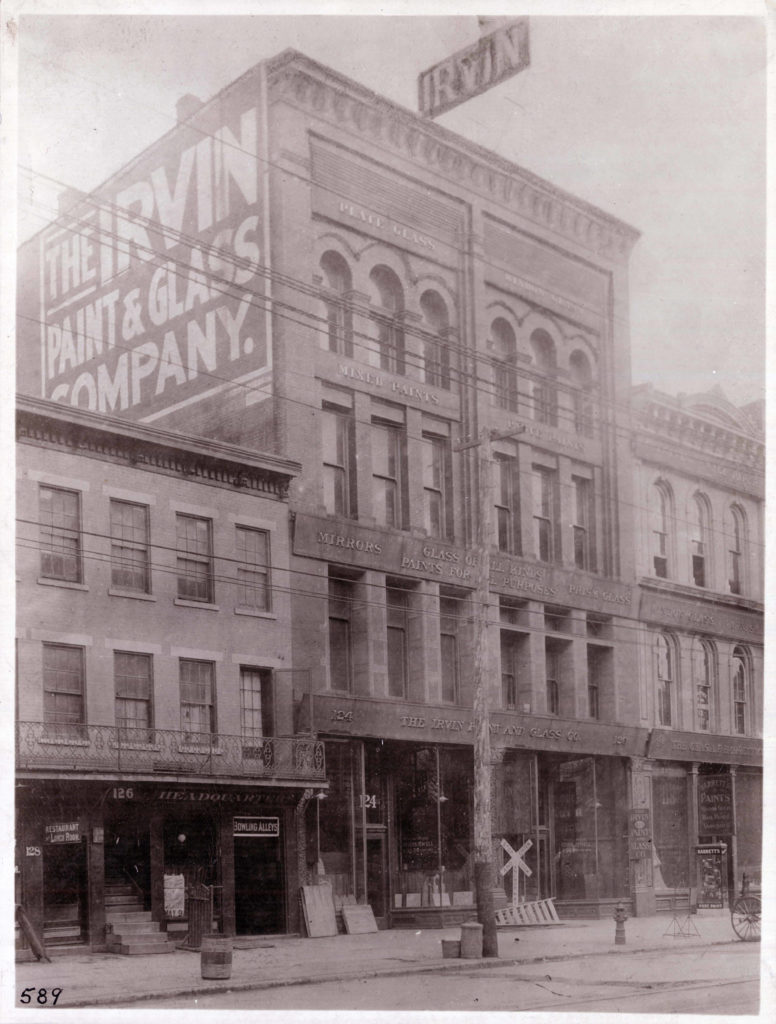
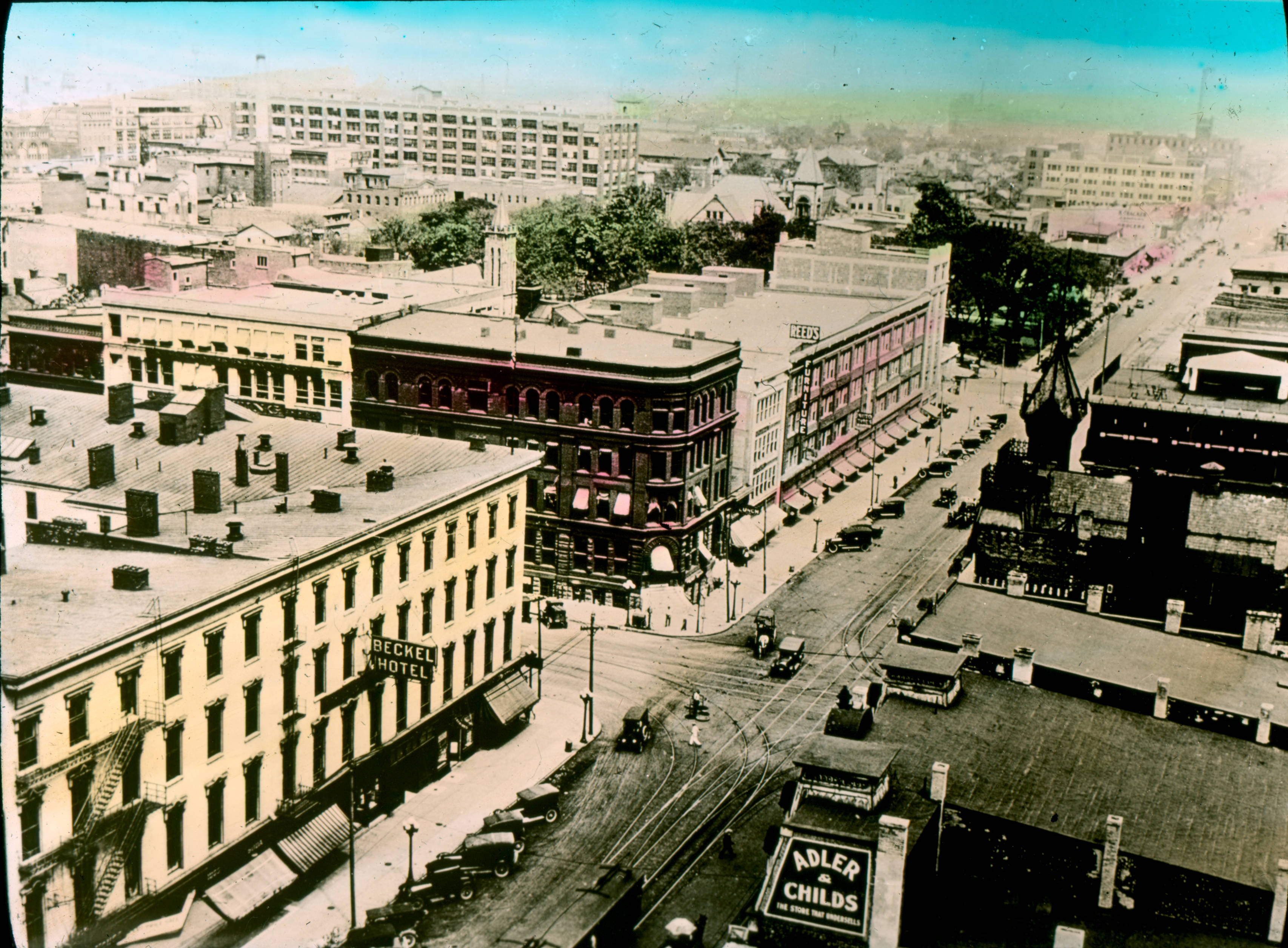

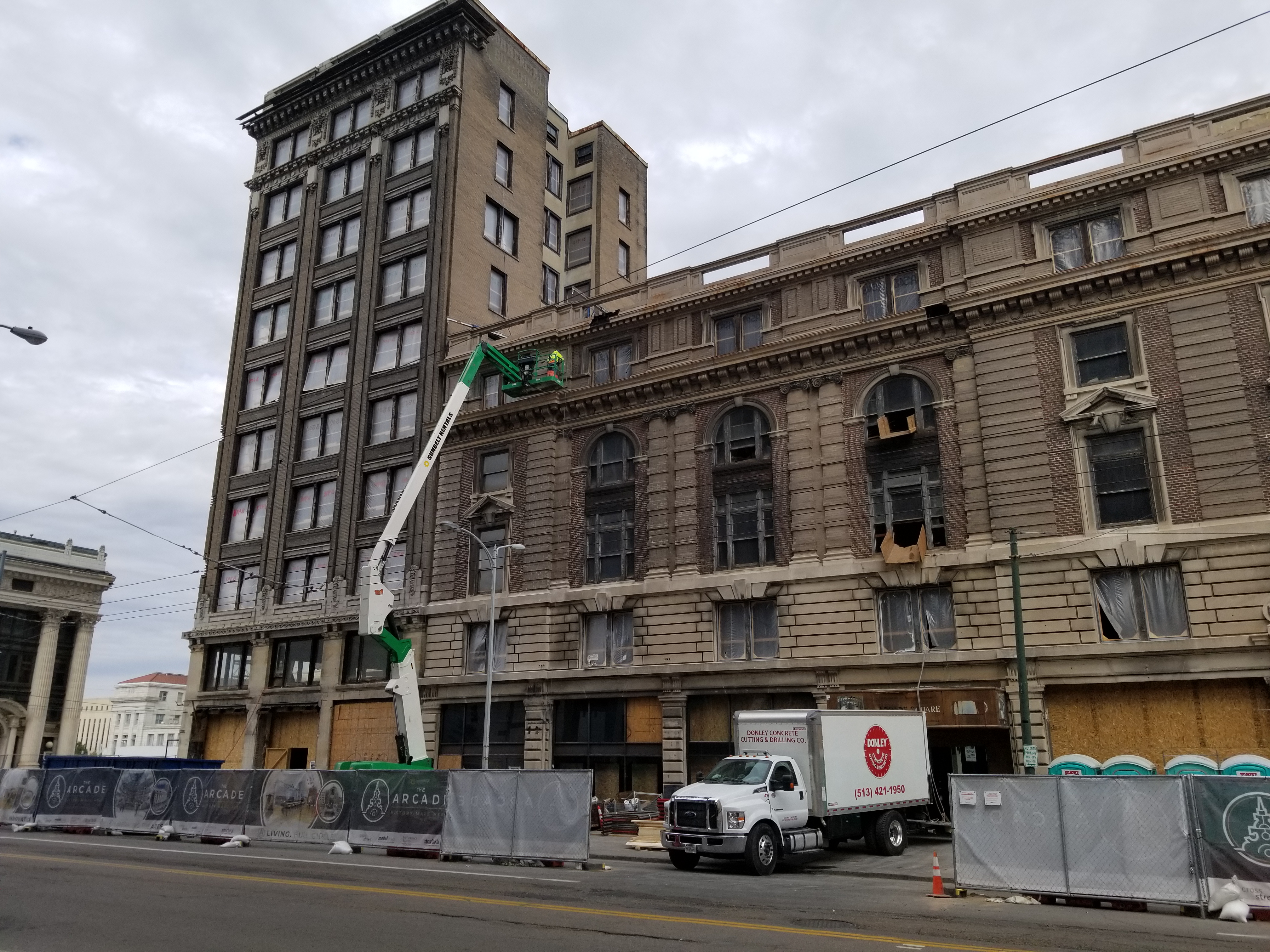
Leave a Reply